The Disappearance of David Stone
October 20, 2020
La Jolla, California — a place filled with endless days of sunshine, the sparkling blue Pacific, tourists, surfers, and the rich and famous. Certainly a place where no one would expect the sudden and mysterious disappearance of a 29-year-old student of the La Jolla Academy of Advertising Arts. My dad, Mark Golik, definitely wouldn’t have expected it to happen to one of his closest friends.
The year was 1988. My father was living in San Diego, studying advertising at the now-defunct La Jolla Academy. He spent most of his time with his roommate, Anders Sjögrell, and their friend David Stone, who lived down the street from them.
Born on March 18, 1959, David was a 29-year-old stockbroker who played football in high school and college.
A few weeks prior to Halloween, students at the Academy were asked to design magazine covers for a place they’d like to visit. David chose Sedona, Arizona, a popular destination for vision quests. It is believed that, through isolation and meditation, vision quests can lead to otherwise hidden inner truths. It’s a common rite of passage for followers of the New Age movement, which is known for self-enlightenment and spiritual growth.
David’s enthusiasm on the subject puzzled my father, since he had never heard his friend talk about Sedona before. After class, my dad asked David, “Hey, what’s up with all that New Age and Sedona stuff?”
David responded, “Oh, it’s a very fascinating and important place.”
This response didn’t lessen my dad’s confusion, as David had never expressed interest in the movement to his friends, yet he talked very passionately about it in his presentation.
Later that month, David held a Halloween party at his apartment on Friday, October 28.
“It was a pretty laid-back party,” my dad recalled. “There were about 20 of us, and no drugs or anything like that were involved.”
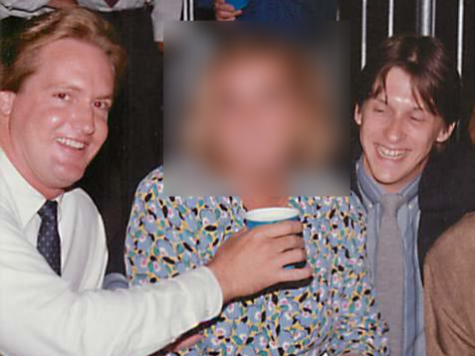
Everything was going well until the end of the night, when David saw a few of his friends practicing their putting with David’s golf clubs. Among them were my dad and Anders. David burst into anger and attacked Anders, pushing him against the wall and punching him repeatedly, as my dad and the rest of the partygoers tried to break up the fight.
When they finally split up the two of them, Anders was bleeding profusely, and David seemed to be in shock of his actions. With the energy of the night ruined, everyone began to leave the party. On their way out, my dad asked Anders if he needed to go to the hospital. He said he’d be fine; he was just a bit shaken up and ready to go home.
On the way home, my father realized that he’d left his jacket in the apartment. It was a chilly night, and he didn’t want to walk home without it. Anders waited outside while my dad trepidatiously went back into the apartment. He searched the apartment until he found his jacket.
On his way out, David blocked the doorway. My dad asked him if he was okay, since his actions were out of the ordinary.
“He never seemed to have any anger or control issues — at least not around us, and we were with him all the time,” my dad recalled.
Leaving my dad more puzzled than ever, David said, “Don’t you know what he represents?”
At this point, my dad was not only concerned for his own safety, but also for David’s sanity. As my dad left the apartment, David said he needed some time to reflect on his actions.
The following Monday, Halloween, David wasn’t at school. His friends and classmates didn’t think much of it; they just assumed that David needed some time away from everyone and that’d he’d be back soon.
Little did they expect that the story would gain the attention of a national audience two years later.
Season 3, episode 7 of Unsolved Mysteries, which aired in 1990, revealed more information about David’s disappearance. Apparently, while David’s classmates were wondering where he was, he had already begun his bizarre journey. On Halloween morning, he walked into the New Mexico desert 145 miles east of Tucson, Arizona. At around dawn, a farmer recalled seeing him walking along a dirt road. Because it was unusual to see people in this remote part of New Mexico, the farmer started a conversation with him. David told him that he was looking for “the beast” and then continued on his journey. David’s father, Harry Stone Jr., believed that “the beast” referred to the negativity in David’s life, which he would need to conquer in order to see his vision.
Throughout the day, several other local residents recalled seeing David in the desert, muttering to himself, acting strangely, and walking through rough terrain with a yucca walking stick.
As if the story of David’s disappearance wasn’t already peculiar enough, he also left behind a series of mysterious clues — several of which related to the New Age movement. He left his car by pyramid-shaped mountains, and pyramids are important shapes in the movement. Searchers also found a pyramid of rocks surrounded by a triangle. Another pyramid of rocks was found on the next day of searching, but next to this one were David’s gold Rolex watch and two quarters.
Three miles to the north of this pyramid, searchers found a series of numbers written in the sand: the Fibonacci sequence, which is often used by engineers and stock market analysts. The sequence goes 1, 1, 2, 3, 5, 8, 13, 21, and so on. However, David replaced the 21 with 18. As David was a stockbroker, he must have known the sequence very well. Was it an honest mistake or a cryptic sign of trouble? The number 18 is a common theme here, as he wore #18 during his senior year of college football, and his abandoned car was found at mile marker 18.
Bloodhounds tracked David’s scent to a desolate stretch of New Mexico’s Highway 80, 14 miles south of Road Forks, New Mexico. They found his car parked at a cockeyed angle and abandoned on the side of the road. According to former Hidalgo County sheriff’s Deputy Bill Cavaliere, “It was the most bizarre case I ever worked on. It was just about the strangest case that ever happened around here.”
While looking through items in the car, David’s parents found a strange business card in a pocketbook Bible. The business card belonged to a man named Tony Ballesteros, who was interrogated by the police but claimed to have never met David. Ballesteros and his friends had been camping in the desert, so it’s likely that he dropped the business card and David picked it up as he passed through the campground.
David’s parents also found a strange note that read: “They think the WORD is in the safe. Six knives in Rob’s room. Yous buys your tea and yous take your chances Halloween.”
No one can be certain of the meaning behind this oddly worded message, but it’s interesting that he mentioned Halloween, since that was the day of his disappearance.
On February 23, 1992, four years after he disappeared, two hikers found David’s skeletal remains in the desert near Granite Gap, New Mexico. It was confirmed that the body was his, but medical examiners and police could not determine the time or cause of his death. There was no evidence of foul play, making it likely that he died of dehydration or prolonged exposure to the outdoors.
“We never found where he got his water. We never found discarded food wrappers,” said Hidalgo County search leader Ralph Dawdy. “We’re not used to looking for people who don’t want to be found.”
To this day, no one knows exactly what happened to David, why he acted so strangely before he left, or the meaning behind his cryptic clues.

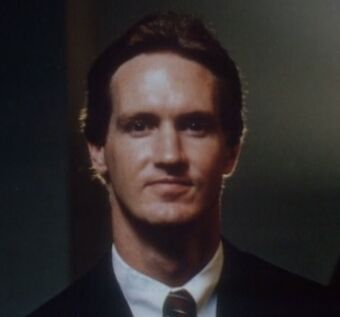
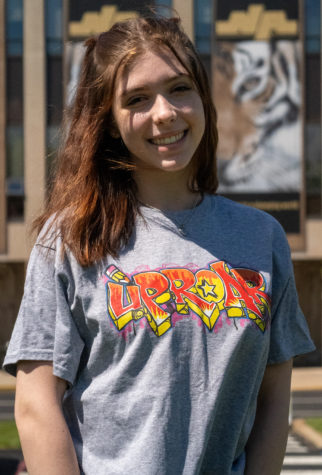
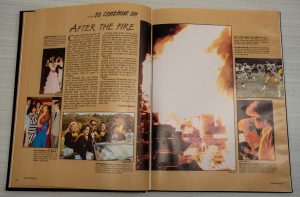



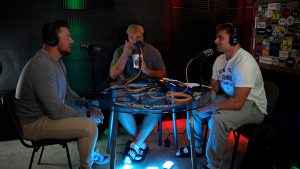





Sam • Apr 14, 2023 at 8:17 pm
If he was going on a vision quest, he chose an unsafe area and wasn’t with someone.
Fasting is one of the things many do during this time. The heat, lack of water, lack of food, and poor clothing exposed him too much. Confusion set in and he became lost, dying in the desert. If he wasn’t eating, there would be no food wrappers left behind. He might have urinated but that would be hard to track without dogs. He likely did not take enough water to begin with, if any.
There are no cryptic clues. The reference to Tea might be due to thirst and/or hunger. If he had mental issues as well, he was doomed from the start.
Tracey May • Jul 14, 2022 at 5:45 am
He may have had CTE , the brain injury some football players get. It was not talked about in the 90s. That could explain his erratic behavior prior to him leaving. So sad.
mel stanley • Aug 9, 2021 at 5:41 pm
OK I’ll tell, just for David Stone, he knew exactly what he was doing when he put18 & NOT 21, you cant build an equilateral triangle / pyramid with 21 all 3 sides and inside must be Equal using Fibonacci numbers he had to end with18. 33,33,33,(33) RIP David I’ve told some.
Jason • Sep 19, 2022 at 10:56 pm
sorry, i’m not following your post, mel. of course an equilateral triangle’s sides are equal, but this doesn’t say why David Stone used 18 rather than the appropriate 21.
I believe he may have been disoriented, and just did the math incorrectly, looking at the sum of the last two – 8 + 13, and just incorrectly and hastily using “18”.
. El • Dec 19, 2022 at 5:15 pm
You need 18 inplace of21 to complete the triangle with 3 sides that equal 33 33 33 the church david was part of david is telling you the story
Anonmyous • Oct 20, 2020 at 10:03 pm
And they say there is more good in the world. This world sucks and the universe is out to torment us all only to make sure our sufferings never get traced back to the universe, hence why this happened and remains a mystery
P Purcell • Mar 21, 2022 at 6:54 pm
I am a psychiatrist. The history is highly suggestive of a psychotic episode,. Rest in peace.
Jason • Sep 19, 2022 at 10:59 pm
His parents were heartbroken. (I saw the “Unsolved Mysteries” episode tonight, in fact, on 9/19/2022.) He had companionship, as well as people who did NOT know him personally looking for him, etc.
These are all examples of ‘good’. That is a lot of good, despite the unfortunate situation David was mired in.